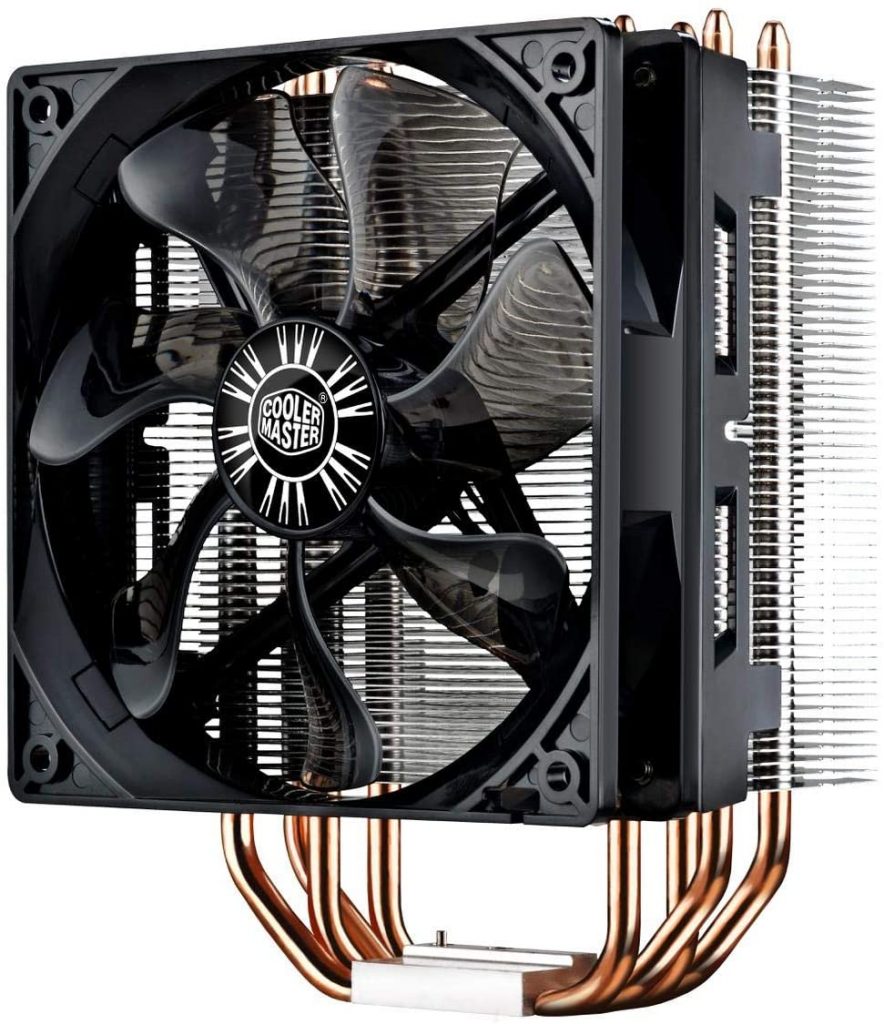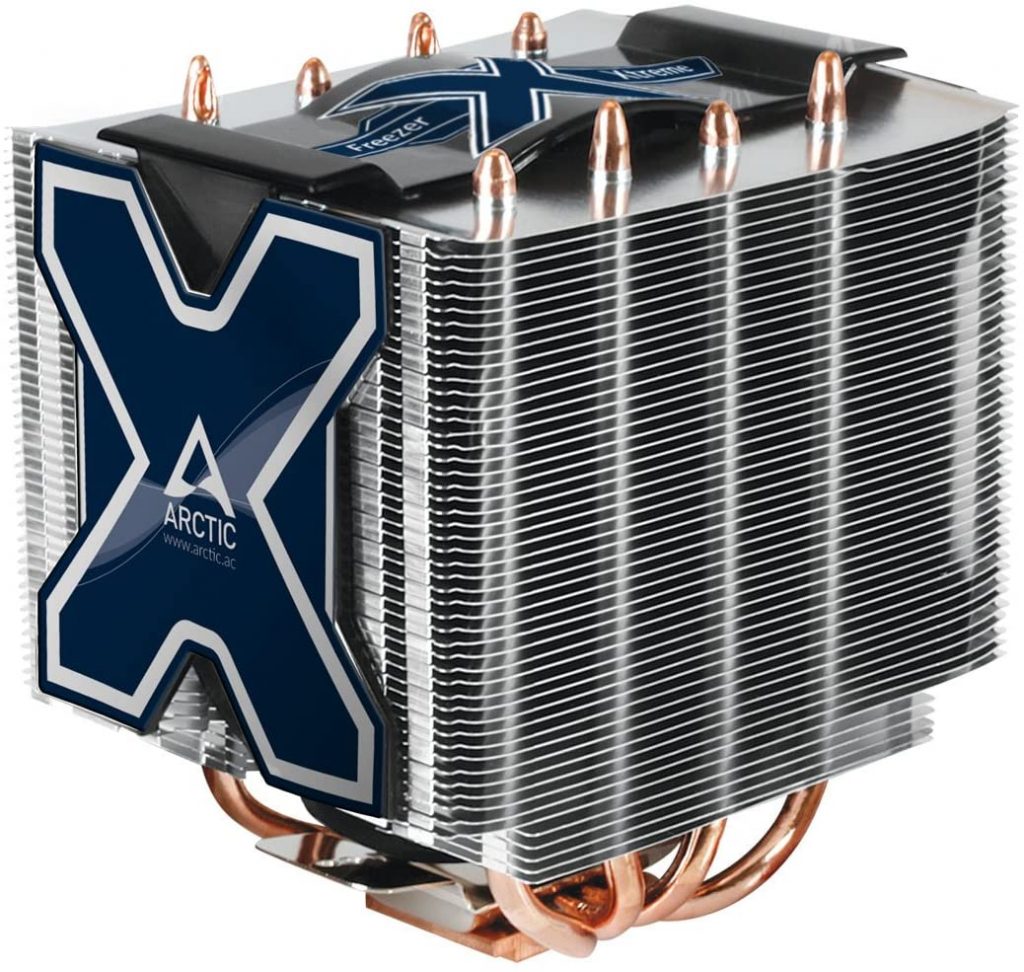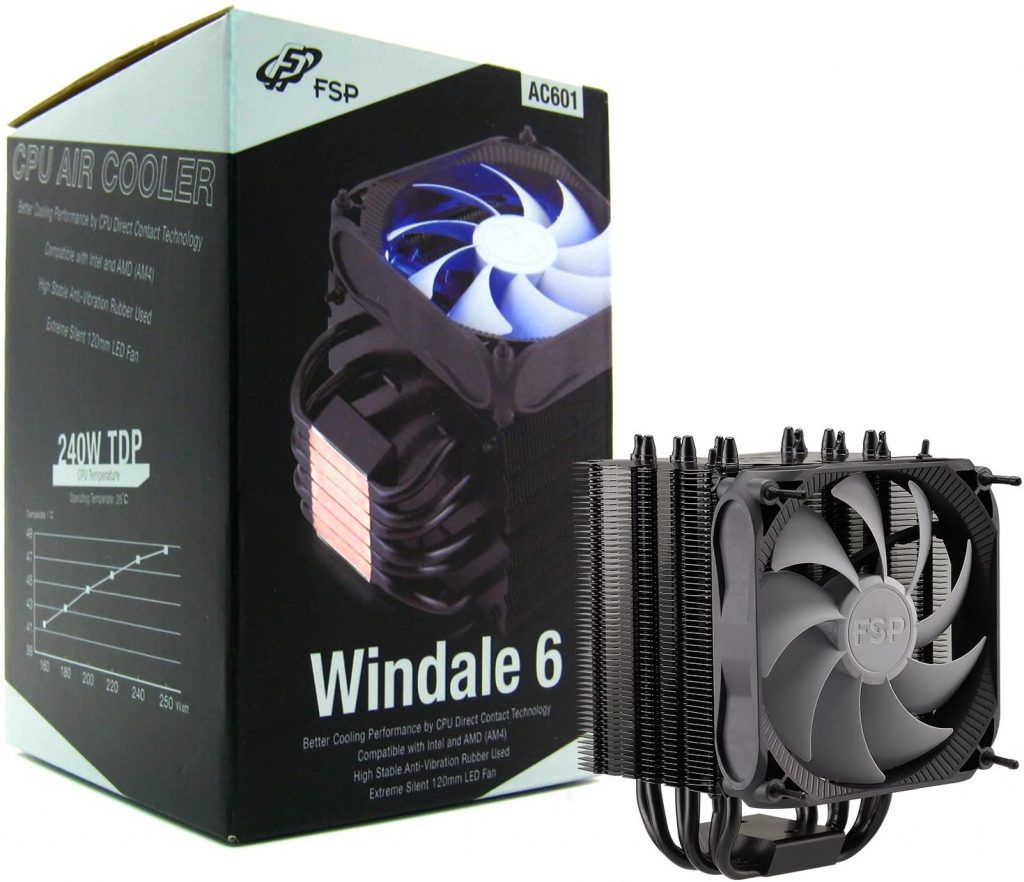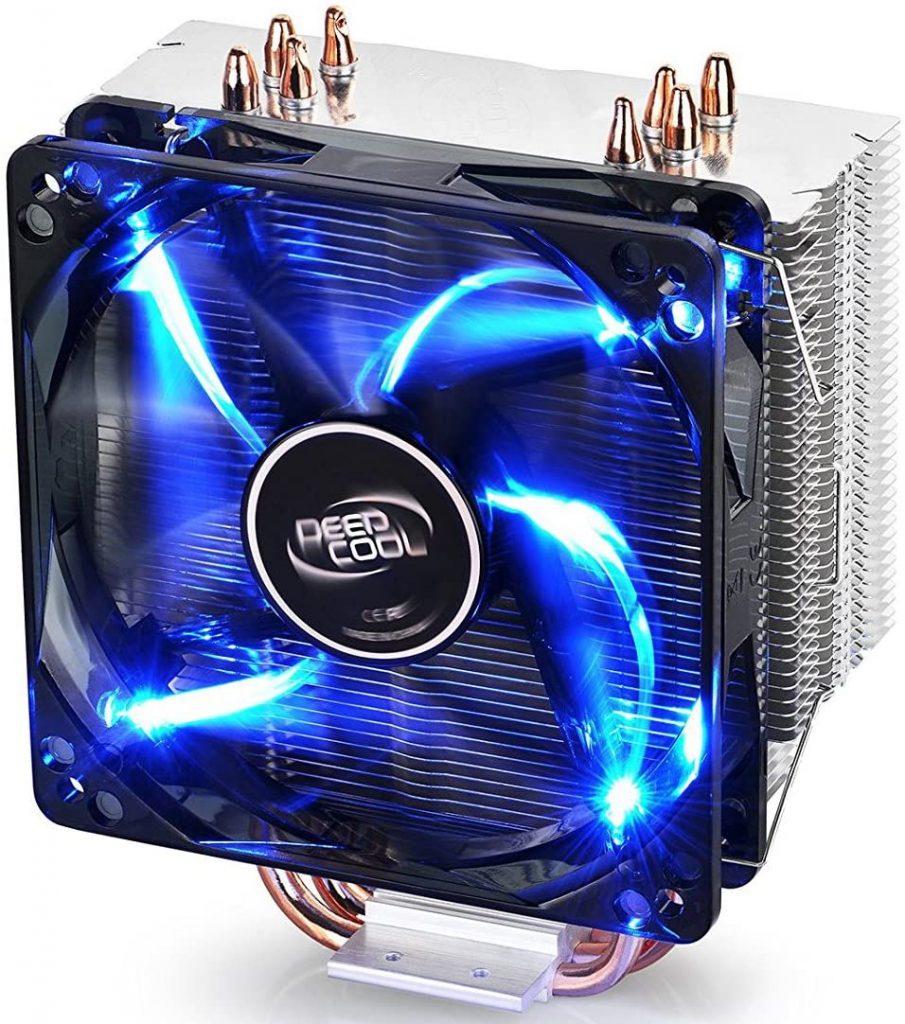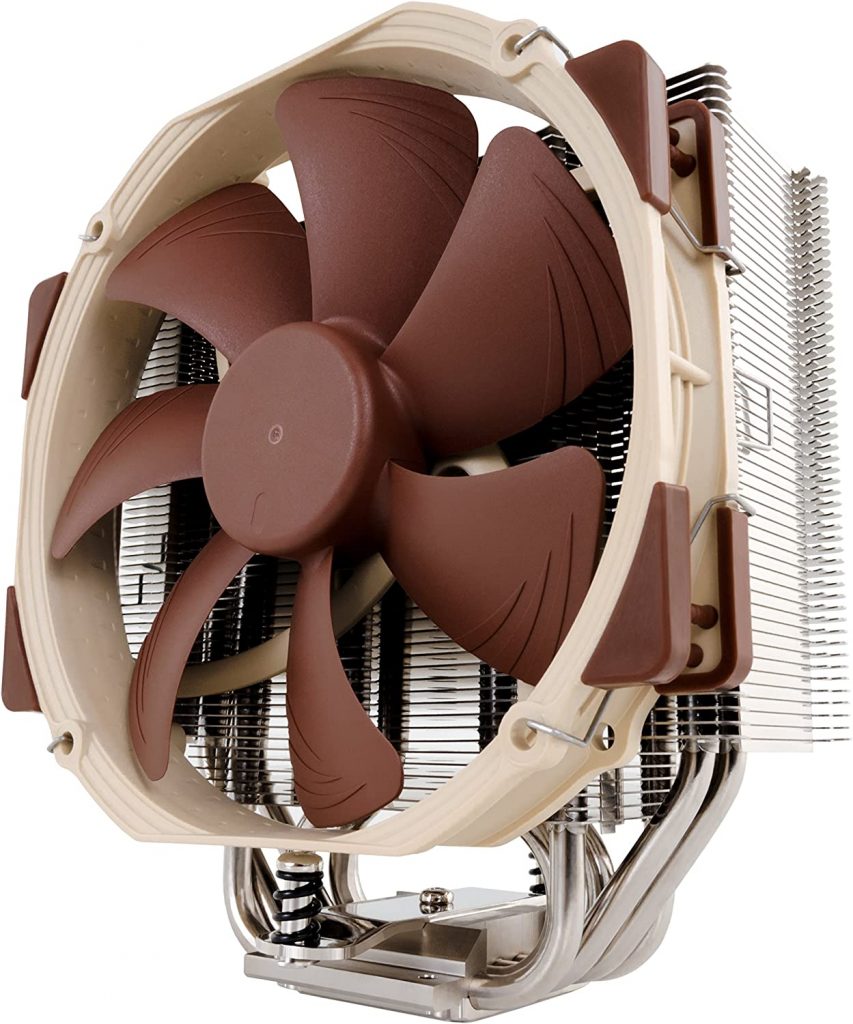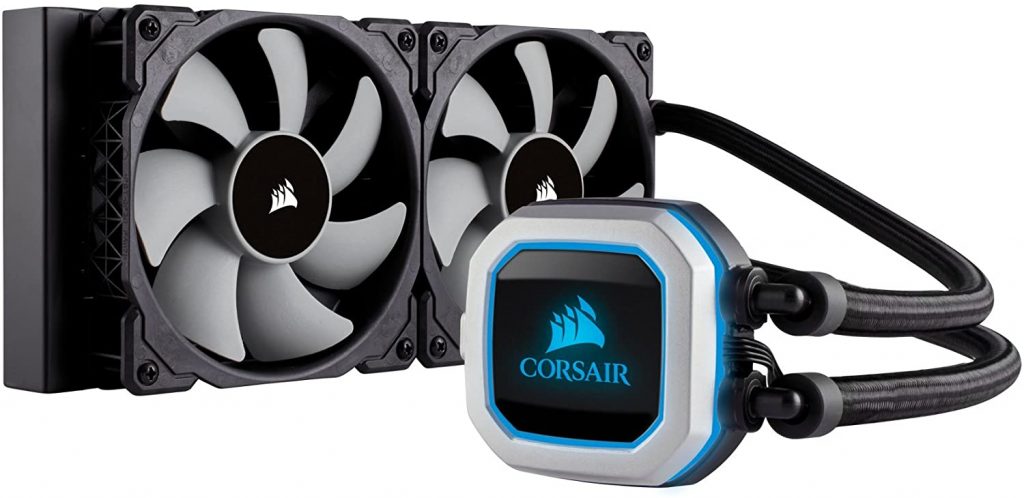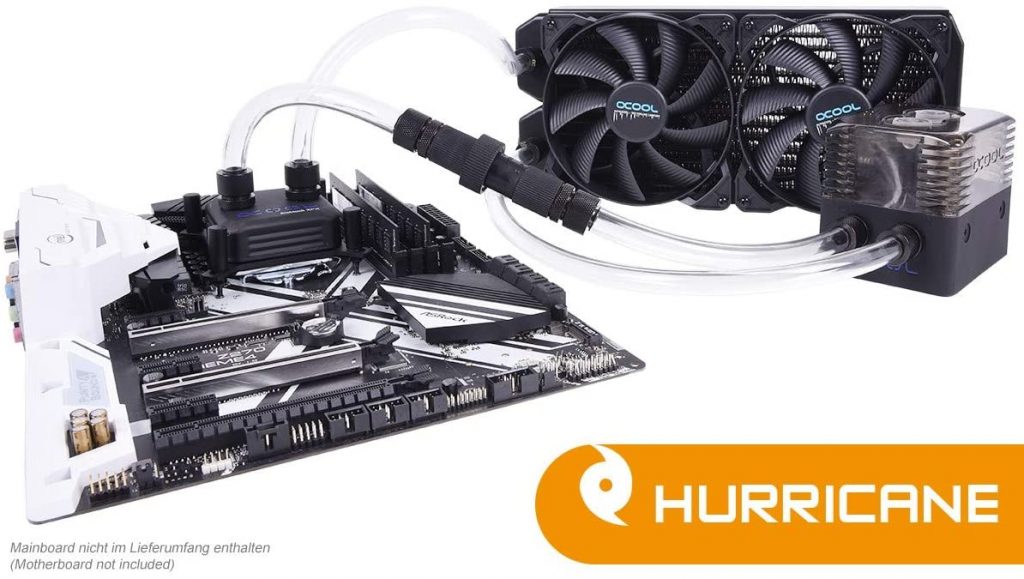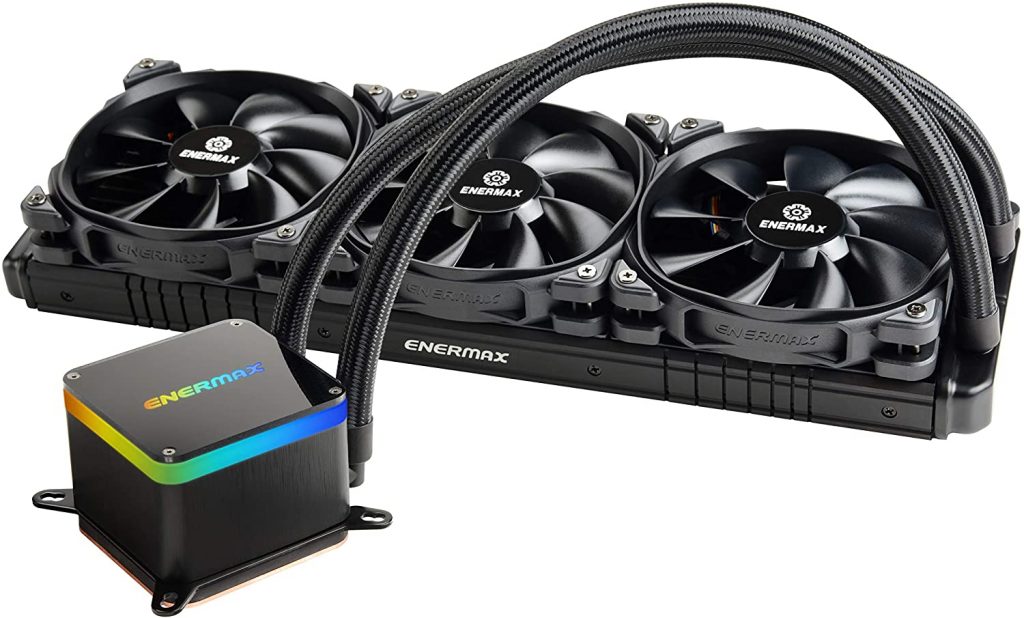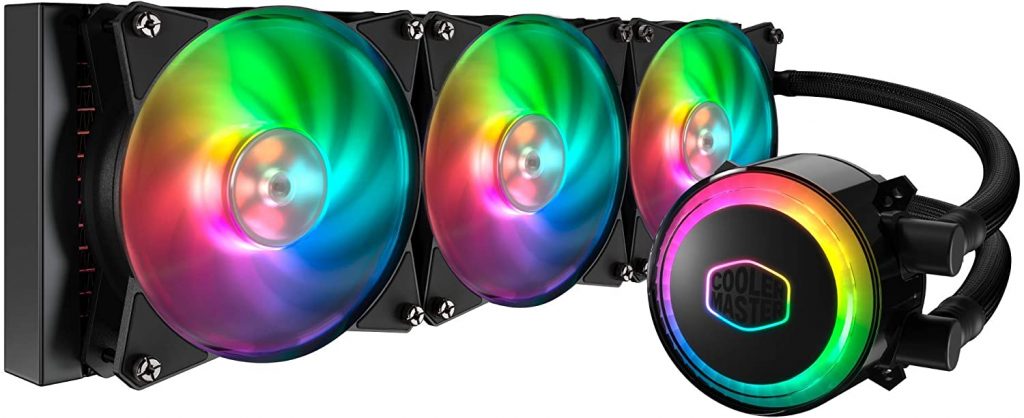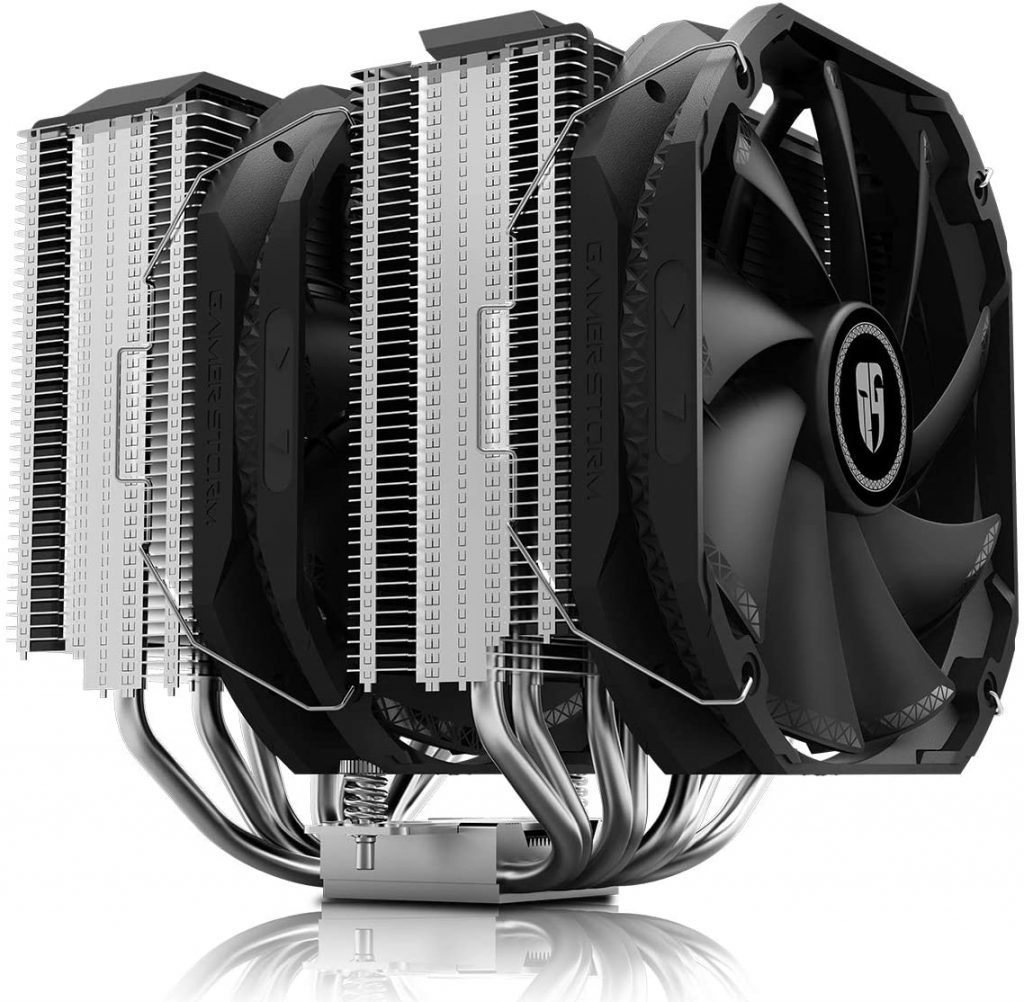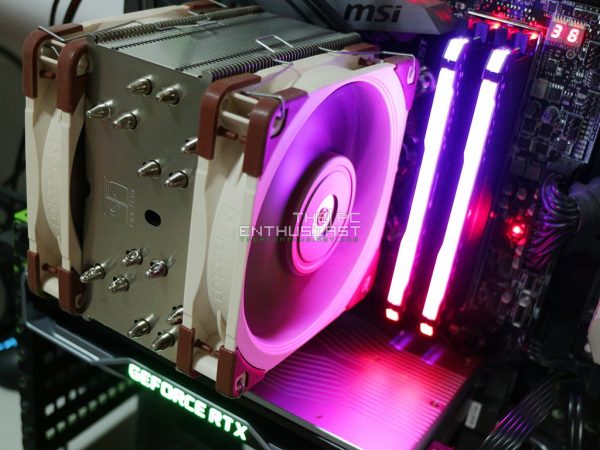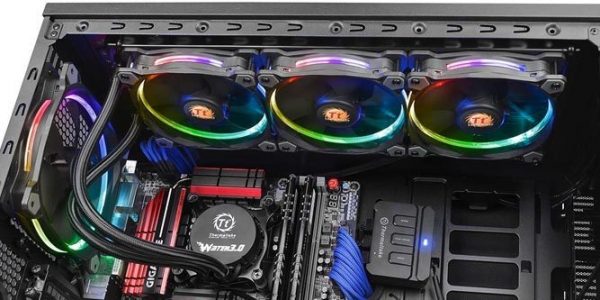What is a CPU Cooler?
CPU Coolers are parts of your PC that ensures that it doesn’t go above a certain temperature. Using your PC generates a lot of heat. More so if you’re overclocking said PC. The CPU Cooler is there to ensure that it doesn’t produce too much that it damages the hardware inside.
Best CPU Coolers under $50
Best CPU Coolers under $100
Best Air CPU Coolers
Best Liquid CPU Coolers
Best Premium CPU Coolers
How Do CPU Coolers Work?
CPU Coolers, take out the excess heat that’s generated by your PC’s components when it’s being used. This ensures that a PC will always maintain an acceptable temperature range as too much heat will damage not only the CPU, but also other components as well. As a given, more powerful coolers are needed for more powerful PC’s. Thus, if you wish for better performance on your PC, a CPU cooler is a necessary and worthwhile purchase. Known as the CDC (Continuous Direct Contact) technology. It’s equipped with a 120mm fan that’s quiet and does a good job in keeping your CPU’s temperature below dangerous levels even on increased CPU load. It boasts a dual-fan design; meaning you add yet another 120mm fan if you wish to get more cooling performance. Do note though that the cooler is measured at 159mm making it a bit taller compared to some coolers. In short, measure your PC case before buying this. Despite this, it’s a silent fan that you would only hear a slight whine even at full speed. The CPU cooler has 4 double-sided copper heat pipes with direct contact with your PC’s CPU for better heat dispersion. Also, you don’t need to buy and apply the thermal paste as it has a pre-applied MX-2 thermal compound. The Arctic Freezer Xtreme CPU Cooler can support a substantial range of Intel and AMD Sockets including the popular AM4 Socket. Its installation process is also pretty simple with a push-pin mounting system. The performance of this CPU Cooler is pretty great when you consider its price. Not only that, you can do some decent amount of overclocking as well. Not too serious though. Unfortunately, you’re gonna have to check the clearance your motherboard and PC case offers you as even if the height of the cooler is only 140mm, it’s quite wide at 132mm. So, if it meets these requirements and if you wish to get a strong budget twin-tower CPU cooler that also runs silently then this is the product you’re looking for. Check out the ARCTIC Freezer Xtreme today and keep your CPU cool while you play for extended hours. The fan is affixed on the heatsink through the rubber screw assembly that allows it to minimize vibration and extra noise. The heatsink’s place in the cooler isn’t centered and offset to one side so it doesn’t interfere with the RAM and gives clearance for RAM that have taller heatsinks. The CPU cooler supports a myriad of Intel and AMD CPU Sockets. This includes the aforementioned AMD AM4 Socket. The mounting mechanism is pretty easy and is pretty sturdy in addition to that. You can obtain and use processors like the Core i7 and Ryzen 2700X with ease through this CPU cooler without the temperature worries that come with them. The cooler is bigger and taller at a height of 165mm. So you might want to be careful and check your PC case specs and clearance before making a purchase. You can also do some overclocking with this installed as well. However, make sure to get good quality thermal paste for the cooler. One of the convenient features the cooler has is its specialized fan clips. These clips are practical and are fitted closer to its heatsink in comparison to other products. You can easily adjust, install and replace these clips. The cooler can be installed without even removing your motherboard. The cooler’s high-performance PWM fan is made with high static pressure allowing it the ability to produce a big amount of airflow. The LED lighting it has is a stylistic choice. This means gamers have a fair balance on performance and lesser noise levels. To fit personal taste, the cooler is also available in multiple colors. Its 120 mm radiator is the cooler’s noteworthy feature as its very effective at heat dispersion. It also fits most PC cases if you wish to mount the cooler right on the Intel chipset. Some people might be a bit hesitant to install a liquid cooler with tubing that can either break or leak. However, you don’t need to worry overmuch as the cooler has durable tubing that can withstand heavy use. The flow control software that’s alongside the CPU cooler gives you the ability to set how intense the cooling process will be. It’s a useful customization feature that allows you to edit the cooler’s capabilities based on the intended usage of the PC in question. The software is especially useful for gamers. And its overall price makes it an affordable alternative to other water coolers that are more expensive in general. Check out the EVGA CLC 120 CL11 to give your CPU that extra cooling boost. For its Threadripper air cooling, the cooler ticks all boxes for the enthusiasts, gamers, and overclockers all. Check out the Noctua NH-U14S today and get a premium air CPU cooler with excellent performance. Especially if you’re considering getting a cooler that comes with an aggressively designed exterior shell alongside the inclusion of addressable RGB lighting from inside its cooling tower. However, coupled with it sitting on an upper range of an affordable price tier, and it might cause builders who make budget systems to back off a bit. But, considering the product’s performance and features, it might be a good investment This Corsair H100i ProCPU cooler has 2400 RPM fans which gives excellent cooling and less noise. When combined with a smart fan curve, idle and lighter loads give it the ability for quiet operation. When you decide it’s finally time for your CPU cores to go overdrive, it’s powerful fans will make their presence known. However, you can be comforted by the fact that your PC’s performance will stay at optimum levels. For those that wish for a complete, great-quality water cooling kit in one, this is an excellent choice if you have room for it in their PC chassis for the massive 3x 140mm radiator and large pump/reservoir combo. Check out Alphacool Eissturm Hurricane Copper 45 to get a quality CPU cooler that is worth its price. Many Threadripper fans that wish for an excellent cooling performance, and those who want to set up simple fan-cooling curves, will find that the Liqtech 360 TR4 OC will provide a stellar performance. Another thing to take note is the fact that the Cooler Master ML360R RGB is the current leader in 360 AIO thermal performance. Coupling that thermal performance with a practically silent run time and this air cooler makes it one of the choices if you wish for an air-cooling CPU cooler for your PC. And it’s great looks and easy installation, also, you won’t regret picking this bad boy for sure. Most PC Builders often put the most focus and money on a CPU and GPU, without much thought for anything else. While it’s true that getting these is step #1 to making a PC rig that can play the latest and greatest games in the market, there are other things that one must consider. With the most important being making sure that the CPU and GPU will maintain a cool temperature even when it’s being used for extended periods. While many PC parts are made that have heat reduction in mind, there’s no practical way to eliminate all the heat your PC will generate without getting another unit. This is where a CPU cooler would come in. Most CPU coolers can completely cool your PC. In addition to this, Air and liquid cooling are the two most used methods. This is because they offer great cooling tech at reasonable prices. Now that you know about what a CPU cooler is, why not learn how to build a gaming PC today. If you’re looking for parts, here are our best gaming mouse and best graphics card buying guides.
Types of CPU Coolers and their Pros and Cons
Air
Air Cooling is the most common form of cooling available. It uses CPU fans because of their efficiency and due to how cheap it is. These fans work with a heat sink that absorbs heat from critical energy-creating components. If your rig gets too hot, the CPU fan will start to reduce the heat and to provide ventilation for your PC. Simple, and easy to set up. This method is the versatile and common option one can get. Air cooling is typically preferred for the majority of PC users, and many CPU air coolers are good enough to handle some of the more taxing processing that the PC does. Many CPU’s typically have a stock air cooling that exhausts air onto your CPU. While this type of cooling is enough for many casual PC users, a lot of gamers would oftentimes upgrade to aftermarket air coolers that can give better cooling efficiency. Some builders also upgrade because these CPU coolers look better and in many cases, give their PC a unique look and feel. Aftermarket air coolers typically give better performance compared to stock air cooling solutions through the use of copper base plates to spread the excess heat throughout pipes. To ramp up the heat dissipation further, aftermarket air coolers have high-performance fans that carry the hot air from the CPU by use of specially designed fins. For many gamers, an aftermarket air cooler is more than enough to keep their CPU running at the best temperature. While it has a lot of things going for it, Air cooling isn’t without drawbacks. Some aftermarket air coolers won’t fit inside many PC cases unless you’re getting a bigger case. Also, keep in mind that there are fan options that are also noisier than the typical air coolers.
Liquid
Liquid CPU coolers give better performance, quieter, and if we’re being honest here? They look cool. Oftentimes, liquid cooling may bring the image of hardcore techies and gamers that make these types of crazy builds. The reason? This is because while liquid cooling does a phenomenal job in keeping off heat from your PC, it’s not for everyday users. All said and done though? Many Power users and overclockers might need the additional heat reduction liquid cooling gives. And though a lot of gamers don’t need or want the hassle and time-sink of integrating a liquid setup on their PC, many CPU liquid coolers are simple enough to install with current standard builds. Many proponents of air CPU coolers would point out that liquid cooling is a maintenance-heavy system. For example, liquid coolers are vulnerable to rust and/or leakage to happen over time. Fortunately for most users, many liquid CPU coolers have a closed-looped system, and the liquid inside is made to last until the pump it flows on goes out. So there’s no worries about changing the fluid inside. Liquid cooling is said to be the best way to cool a PC because water transfers heat more efficiently compared to air cooling. Liquid cooling also has the added benefit of a quieter PC because no fans are running at a high RPM (Rotation per Minute) all the time. Do note though that liquid cooling PCs have the chance to be dangerous if the liquid inside would leak into the hardware.
Air Vs. Liquid
Both air and liquid coolers give better cooling performance when compared to a stock CPU cooler. But, the cooling solution you decide to obtain and use on your PC build usually depends on a plethora of different factors alongside performance. These are price, compatibility, and yes, looks will usually also play a role in your decision. And while it’s true that liquid cooling does outperform air cooling in many scenarios, you should base your decision on what your PC needs. There’s no reason to get liquid cooling if your CPU doesn’t run hot temperatures and there’s no need to get an aftermarket air cool if you’re not gonna play games at the regular. The most important thing is figuring out what hardware you need to get for the PC you’re making and using. There’s no “best” way to cool down a PC because there’s no “best” way to create a PC. Every PC being built is unique to its builder’s needs. And the CPU cooler you plan to get is just one of many different options you can control. In short, the best way to cool down your PC is really up to you.
How to Take Care of CPU Coolers
One thing you need to know is that it’s typically recommended to merely do standard cleaning on air cooling systems. This is because they’re pretty easy to clean. And can be done at the same time as cleaning your entire rig. Meanwhile… Liquid Cooling Systems are a different beast entirely. Liquid CPU coolers are harder to maintain compared to a typical fan-cooled CPU. They have the typical risks you have to watch out for in a PC– failing memory sticks and video cards, those things– however, you’ve got other things to worry about there as well. These are the pumps, hoses, radiators– in short, stuff you wouldn’t see in a regular fan-cooled PC. These are stuff that you wouldn’t normally have to worry about in a PC. However, since you got a PC that’s cooled by a liquid CPU cooler, you have no choice in the matter. No matter how good your liquid cooler is, if you don’t maintain it, you’re sure to experience the myriad of downsides more than its upsides. We’ll show you how you can take care of your liquid CPU cooler So that you can maintain maximum capability. Another thing to take note, there are two types of CPU coolers, closed and open loop. Closed-loop CPUs don’t need a ton of maintenance; at most, all that’s required is to clean its radiator every few months or thereabouts. Open loops require more maintenance compared to this, so they’re the ones we’re gonna discuss in this article.
Start with a good quality system
Maintenance of your liquid CPU cooler begins from the very instant you integrate it to your PC. It means that from the start, you should already pick quality items to go with your system of choice. A reminder, your liquid CPU cooler ensures that your PC doesn’t overheat when you play games or overclock. So make sure to stay well away from low-quality materials. A liquid PC cooler is typically made of the following parts: water blocks, tubes, pump, radiator reservoir, fans, adapters and fitting, and lastly, the cooling liquid. All these parts might set you back a good few bucks, though they don’t need to be pricey for them to be good. If you have a tight budget, make sure to look at reviews first to confirm if you have the best liquid CPU cooler for the price you’re paying it for.
Prepare to give it more attention
You’ve chosen the perfect liquid cooler for your PC that fits your budget. Now you must prepare yourself both physically and mentally to give it more attention compared to your old cooler that’s probably an air cooler. Unlike air coolers, which as discussed may only need to be cleaned in a standard manner, liquid CPU coolers need to be maintained regularly. If you don’t maintain your liquid cooler, you might experience the APPALLING problem of blocked pumps, gunk that’s inside said pumps and a boatload of problems that will decrease your PC’s performance.
Check your reservoir level now and then
Liquid CPU coolers are great at dispersing your PC’s excess heat because water cools way better and faster compared to air, but it comes with a pretty big downside. A question for people. What happens to a liquid if it encounters heat? LOTS of heat? The right answer? It evaporates. This is the main reason why you should check your cooler’s reservoir level when you get the chance. To make sure you’re not losing too much water. In general, you should also drain the reservoir and then replace it with clean water at least twice a year for the best results. Unless of course if you’re using distilled water. If that’s the case, you can get by with just checking and replacing it just once a year.
Dust out the radiator occasionally
This counts for open and closed-loop systems both. Checking the radiator for dust is a necessity that must be done periodically. After all, radiator fans can get dusty once time passes, and the dust that accumulates can affect your PC’s performance. You got three options/methods in cleaning your radiator. The first is buying a can of compressed air. This is the recommended method for dusting them as it’s easy to do and accomplish. The second option is to use a soft brush to manually brush the fins (Then use the compressed air can to get the best results). Your third option (and the riskiest for the inexperienced) is to run the fins through clean water to clean them. Do remember to dry them off thoroughly before reinstalling them though. That way leads to a wrecked radiator.
Make sure there are no leaks anywhere
Checking for leaks is something that you should get used to when you have a liquid cooler. Even though the use of water for cooling your PC’s been proven to be safe, putting water near any electric components can still be a risky proposition. After all, you don’t want to wreck your PC parts because of a water leak now, would you? If a leak does happen, don’t panic. Take the plug off your system (yes, you need to remove the cable if possible), drain the water inside, and ensure that EVERYTHING is dry as the Sahara before putting the parts back in. Don’t rush, don’t panic. Take all the time you’ll need to reassemble the pipes and seal any leaks. Electrical tape is a good, low-budget solution to close off any leaks.
